Typhoon Mangkhut's aftermath leaves the Philippines reeling and searchers dejected
All photos by CBC's Saša Petricic
Typhoon Mangkhut belted the mountains in the rugged Cordillera region north of Manila, the Philippines capital. It soaked the soil with more rain than it could handle and brought down hillsides in an instant.
Mud is everywhere. It covers roads and houses, and in a few cases, entire villages. It buried this cluster of houses and a group inside, who were seeking shelter from the raging storm. The mud likely covers more than 60 bodies — small-scale miners who lived here. That sparked a desperate search which has been going on for days.
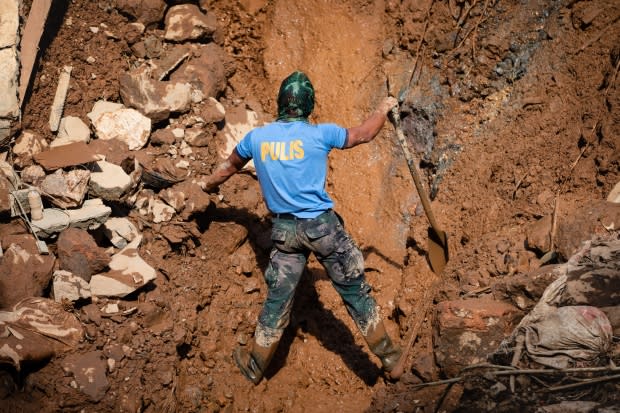
Hundreds of searchers have been trying to get under the mud and debris since Sunday. It's hard, dangerous work, because more rain could trigger more landslides, putting volunteers, police, firefighters and soldiers at risk.
"The soil would definitely come again," says Jesus Yango, the local fire marshal.
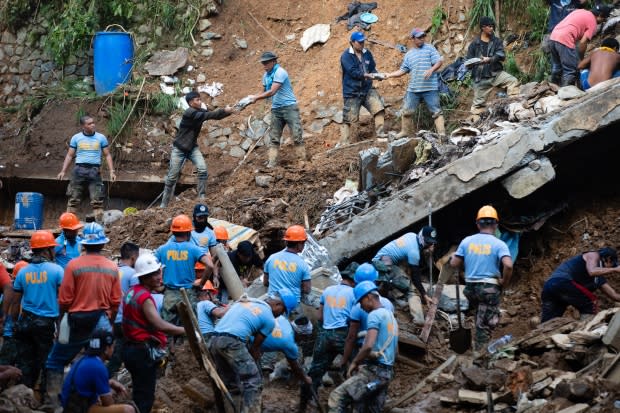
Nearby, a depressingly long long list of names, carefully adjusted as more missing are reported, one or two are declared alive, and more and more are confirmed dead. Relatives stare at it, hoping that their missing family members will end up in the 'Alive' column.
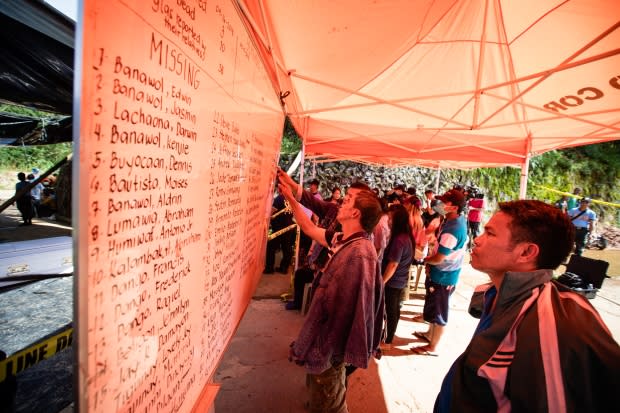
Many relatives have camped out here, eating rice and eggs, their lives turned into a vigil.
"We won't lose hope, no matter what," says Lancy Belusay, "until they find the bodies."
Her brother walked out of here alive, but one cousin died and another cousin is still missing.
"It's very hard to believe, but I still believe there are survivors there."

That hope dims with every body brought up from the bottom of the mud-filled valley.
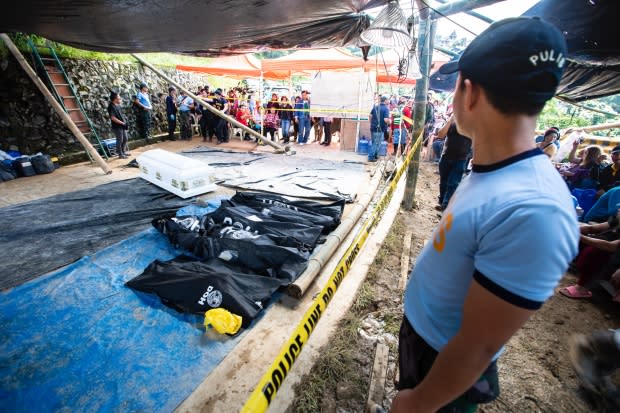
Many of the volunteers in the search are friends of the missing. On a break, they sit tired and grim. Like the missing, they are small-scale miners who fill these mountains, making a living by panning for gold. Bits of that treasure is buried in the mud here, and it's the same mud which ended up burying so many.

They live hand to mouth, the small nuggets of panned gold barely supporting their families. Hours after the typhoon passed – amid the debris – they were back at it.
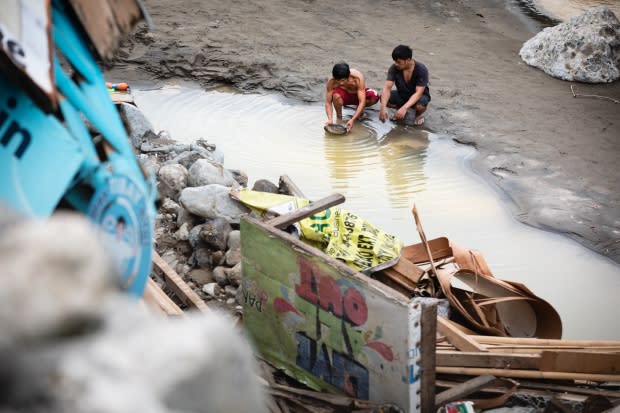
With many roads impassable, walking is the only way through. Mario Casim walked 12 kilometres, over rocks and rubble, to visit his mother.
"Her house is still standing," he says, "but those all around her have fallen and washed away."
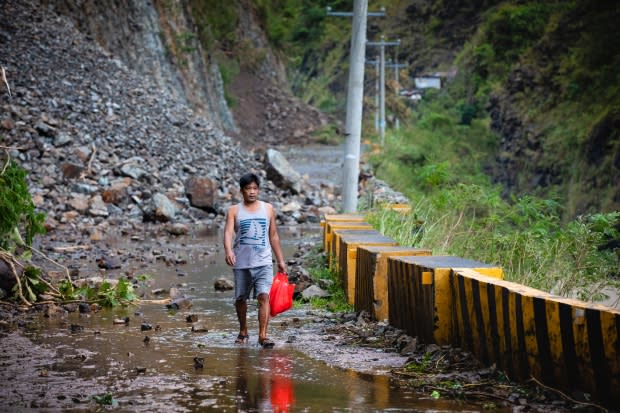
All along the Bued River, which snakes its way amid the mountains, many houses still perch precariously. They sit next to landslides and hillsides that seem dangerously unstable.
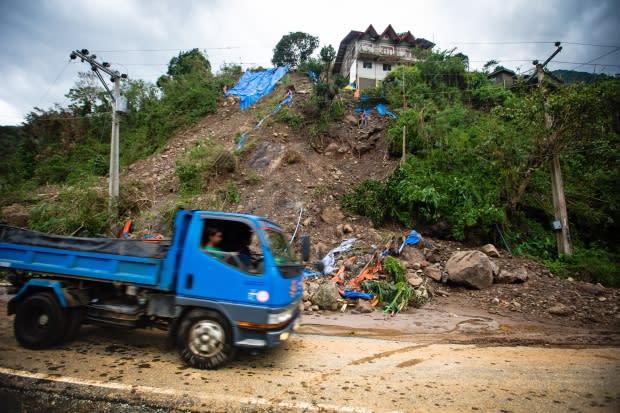
Then, there is the flooding. There are entire villages and neighbourhoods where the only way from house to house is by boat. Typhoon Mangkhut's rains are partly responsible in the municipality of La Paz, where residents have become used to regular inundations after major storms.
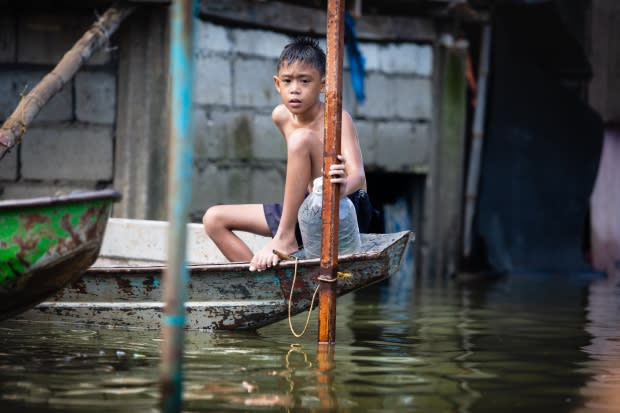
But the flooding here is also because officials have opened dams upstream to allow excess water out. They say reservoir walls weren't strong enough to hold all the water brought by Typhoon Mangkhut.
"And with every typhoon season, the flooding gets worse," says resident Boy Innocencio. "They're drowning us."

Between the water, the high winds and the landslides, the Philippines are still reeling from Typhoon Mangkhut. And the searchers are still looking for the bodies, many ending each day tired and dejected. But they accept it. "We have to stay here because that is where our livelihood is," says miner and volunteer searcher Patrick Alcedo. "Even if it is dangerous."

